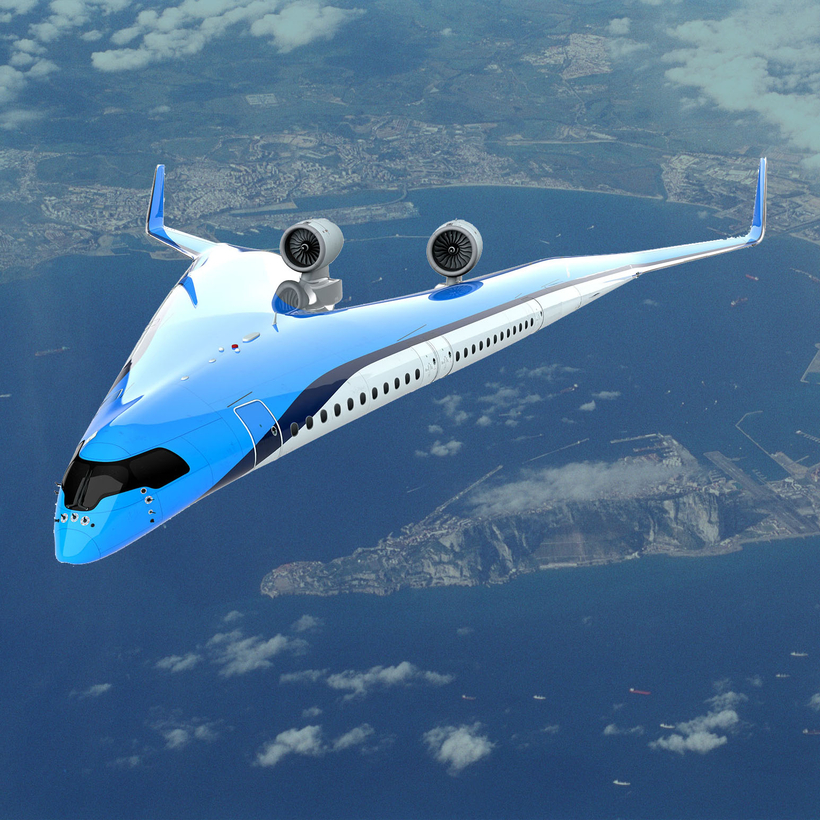Future airline passengers will no longer sit in a cabin like a long tube but inside the wings themselves in a design under development with backing from Airbus and KLM.
Shaped like a giant boomerang, a prototype scale model of the super-efficient Flying-V made its first test flight from a German airbase last week.
The long-range aircraft under development at Delft Technology University in the Netherlands is designed to carry 300 passengers as well as their baggage and its fuel in a structure that blends the wing with fuselage. The shape creates more lift and suffers less drag passing through the air than conventional designs.
“The fuselage actively contributes to the lift of the aircraft,” said Roelof Vos, assistant professor of flight performance and propulsion, at the university. “We’ve been flying these tube and wing aircraft for decades now, but it seems like the configuration is reaching a plateau in terms of energy efficiency.” The project, supported by KLM for the past two years and this year by Airbus, is part of the push to make air travel environmentally sustainable.
Driven by two jet engines, the Flying-V will use 20 percent less fuel than the latest Airbus A350-900 while carrying a similar number of passengers, says the design team.
“We’ve been flying these tube and wing aircraft for decades now, but it seems like the configuration is reaching a plateau in terms of energy efficiency.”
The flight by the 1/20 scale radio-controlled model, 6.5 feet long and 10.5 feet wide, followed wind tunnel testing. Powered by two electric ducted fans, it confirmed its predicted performance.

“One of our worries was that the aircraft might have some difficulty lifting off, since previous calculations had shown that ‘rotation’ could be an issue,” Mr Vos said. “The team optimized the scaled flight model to prevent the issue. But you need to fly to know for sure.”
The aircraft, which is similar to a future airliner concept produced in 2018 by Airbus, is expected to use new forms of propulsion such as electric and electric hybrid if it enters service in 15-20 years. One potential snag is the seesaw sensation that will be felt by passengers as their seats rise and fall in banking wings rather than experiencing the milder movement in a central fuselage.
Charles Bremner is the Paris correspondent for The Times

